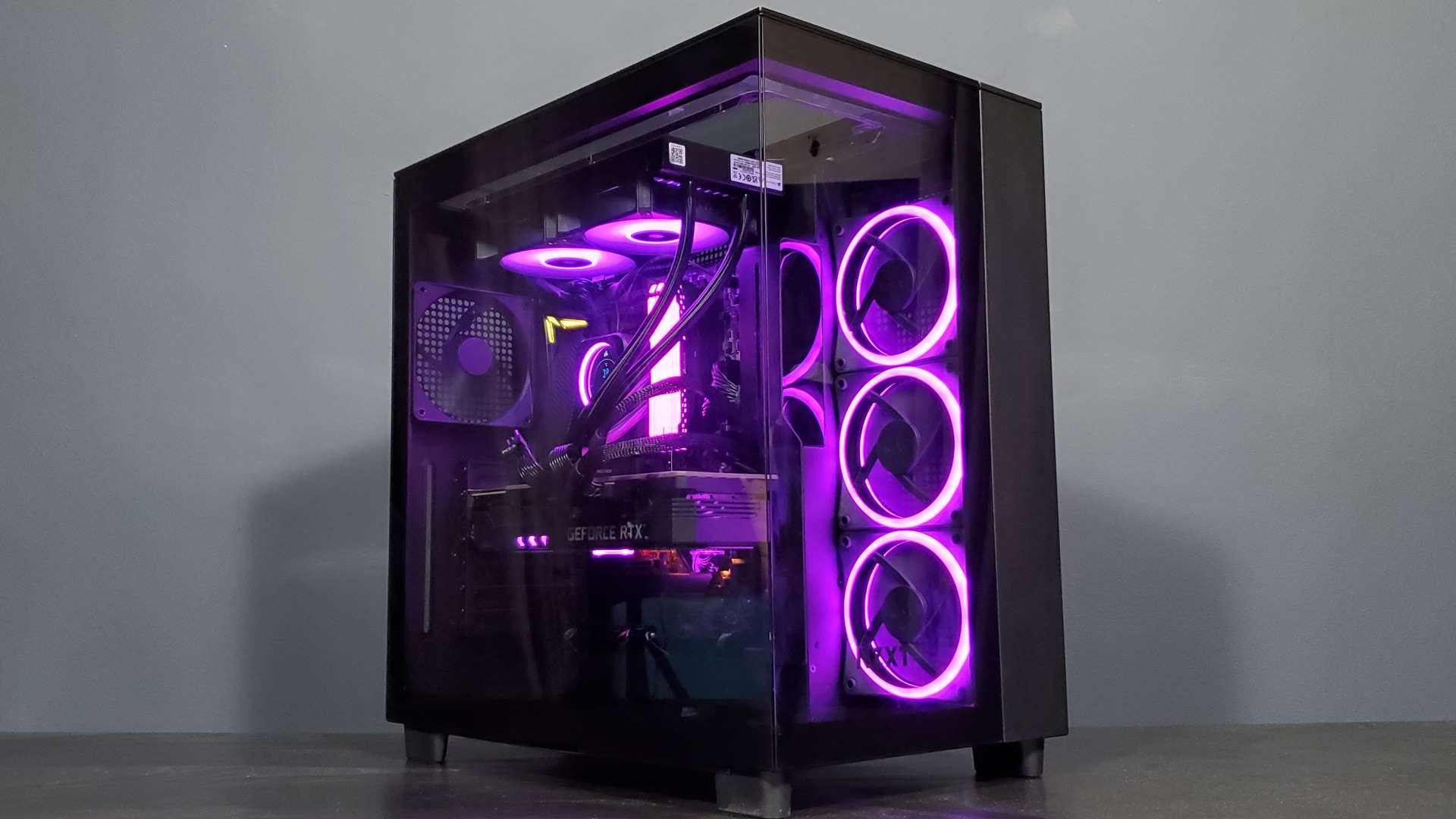Our Verdict
It may be imitating the Lian Li O11 Dynamic, but it's a damn good case in its own right, too. With a triple-sided tempered glass design it's really dialling into that showpiece PC aesthetic, and it's a breeze to build into.
For
- Great looks
- Compartmentalised design
- Lot of space to build into
Against
- Pricey compared with the H9 Flow
- Odd PSU placement
PC Gamer's got your back
As soon as I pulled the NZXT H9 Elite chassis out of the box Jacob pipes up about how it looks like the Lian Li O11 Dynamic. And he just won't shut up about it. Though, to be fair, he has absolutely nailed it. There's no getting away from the fact this three-sided tempered glass PC mid-tower is practically a brushed aluminium copy of the classic Lian Li chassis.
But that's really no bad thing, and the classic phrase about imitation being the sincerest form of flattery would seem to apply here. Lian Li makes a case beloved by many PC gamers, so why shouldn't NZXT make its own version?
Well, the issue is that it's not bringing anything particularly new to the party, apart from a higher price tag. Though it's worth saying that this H9 Elite is just $10 more than the O11 XL chassis of similar dimensions, which is $230. The NZXT case also comes in H9 Flow trim, which eschews the tempered glass top panel and therefore completely matches the mesh topside of the O11 XL.
The H9 Flow is cheaper at $160, and all you're losing there is a triple-pack of F120 RGB Duo fans and that tempered glass top.
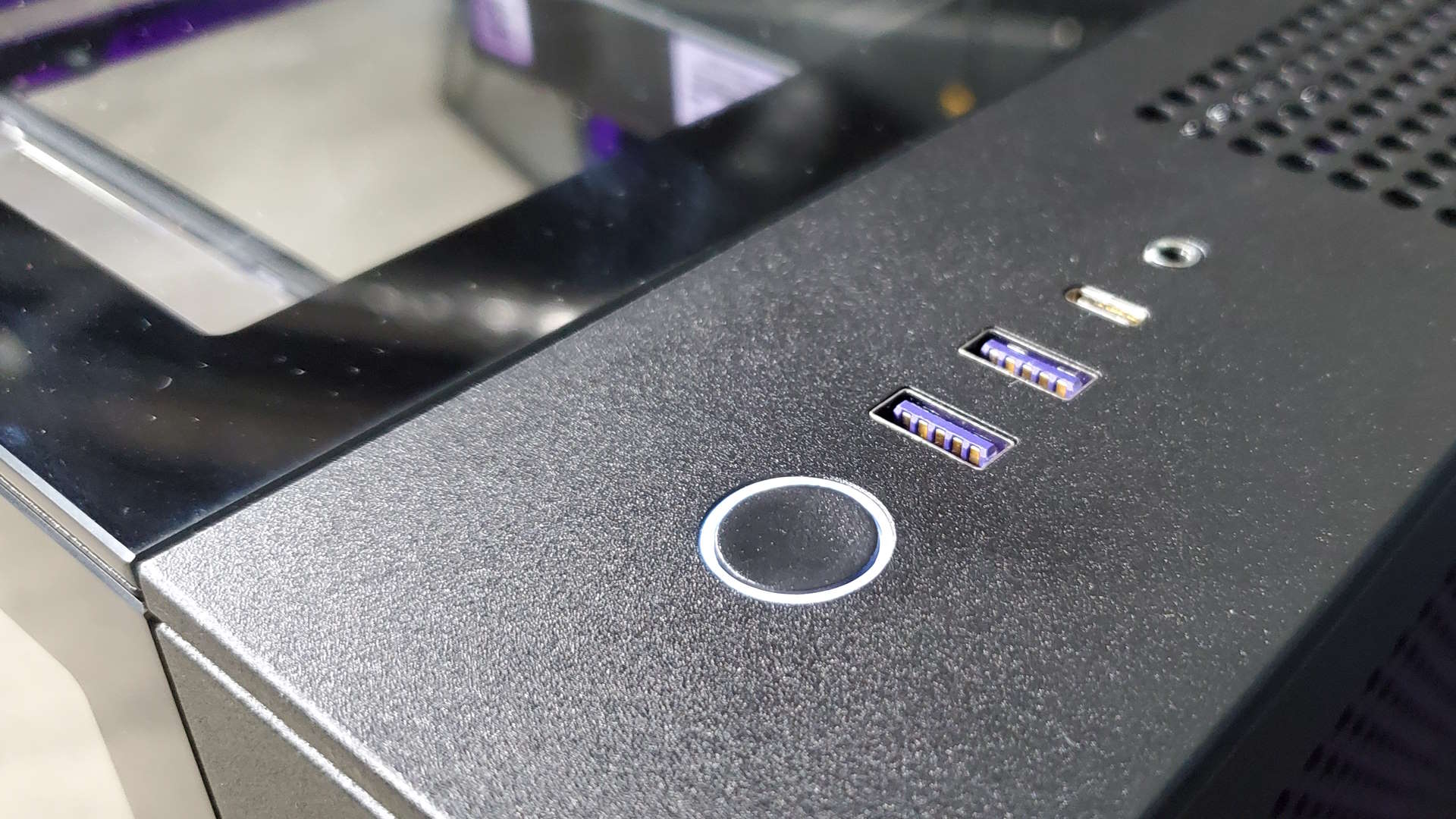
Motherboard support: Mini-ITX, Micro ATX, ATX
Type: Mid-tower
I/O ports: 2x USB 3.2 Gen1 Type-A, 1x USB 3.2 Gen2 Type-C, 3.5mm audio jack
GPU clearance: Up to 425mm
Fans: 3x F120RGB, 1x F120Q
Radiator support: Side - Up to 360mm, Top - Up to 360mm, Bottom - Up to 360mm, Rear - Up to 120mm
Dimensions: 495 x 290 x 466mm
Weight: 13.1kg
Warranty: 2 years
Price: $240 | £260
Either way, you get a PC chassis that's almost more of a presentation case. It will deliver the sort of system you'll see adorning stands at trade shows, or filling out the million or so 'check out my build' posts on every PC reddit from here to the heat death of the universe.
Y'know, those build posts that invariably use a Lian Li O11 Dynamic chassis right now. Okay, I promise I'll only mention that case one more time from now.
One thing NZXT does well is make good chassis, and the H9 Elite is a really good high-end case. The tempered glass surrounds give it that presentation case/fish bowl effect that really shows off your supermodel components, and offers the chance for enough RGB lighting effects to make a real impact.
And all while hiding the more workmanlike PC parts in a separate partition behind the motherboard. This partitioning allows for some clean cable management, or will at least let you hide your wire-y sins behind some sheet metal. I'm a big fan of this kind of compartmentalisation, especially when done sympathetically enough to provide ample space for your power supply and its attendant cabling to live without being crammed in.
Corsair and Lian Li have been doing it for ages, and I've long been into it. I'm less into the sharp slice and dice of my fingers that fumbling around with Lian Li chassis in the past has resulted in. Case in point:
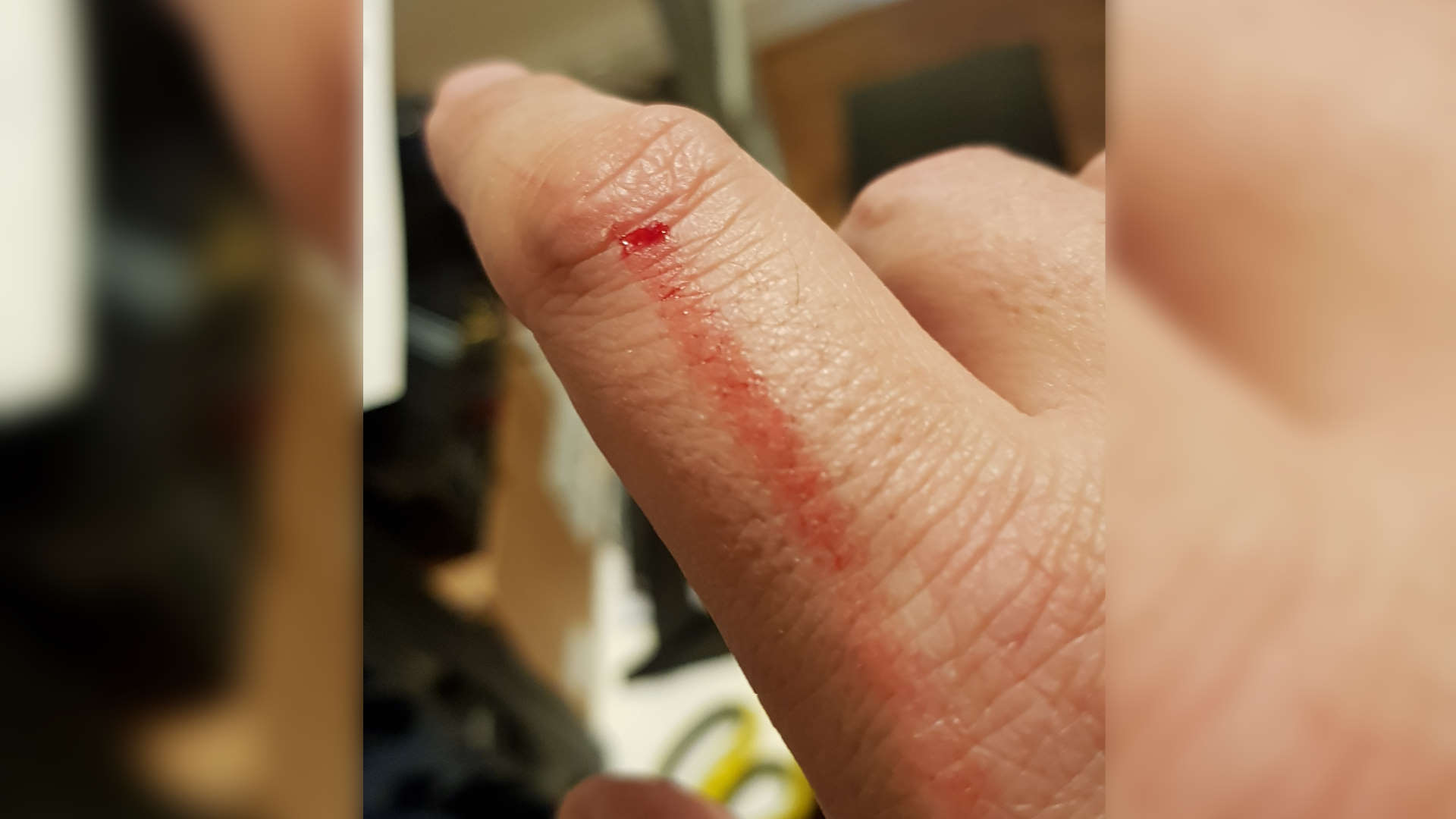
I haven't lost any flesh/blood from building a full PC into the H9 Elite.
I haven't lost any flesh/blood from building a full PC into the H9 Elite, which is testament to the build quality of the NZXT chassis.
Though I will say I'm a bit puzzled by the placement of the PSU tray in this NZXT box. It's set in the middle of the rear side of the H9, set on its edge with the idea being the fan exhausts sideways through the mesh panelling. That in itself is fine, allowing a shorter distance for the cables to run from power supply to motherboard—and no criminally stretched CPU power cables—but means the PSU is set right behind the large motherboard cutout designed to give you free access to the rear of your processor and therefore the CPU cooler mounts.
Having the PSU there, however, means you don't have free access, and could also build up some heat jamming it in behind the processor itself. I guess the idea is that you build once and upgrades are few and far between, meaning regular access but I'm still unsure as to why NZXT hasn't provided some simple modular arrangement that will let you alter the position of the PSU like some other chassis I could mention.
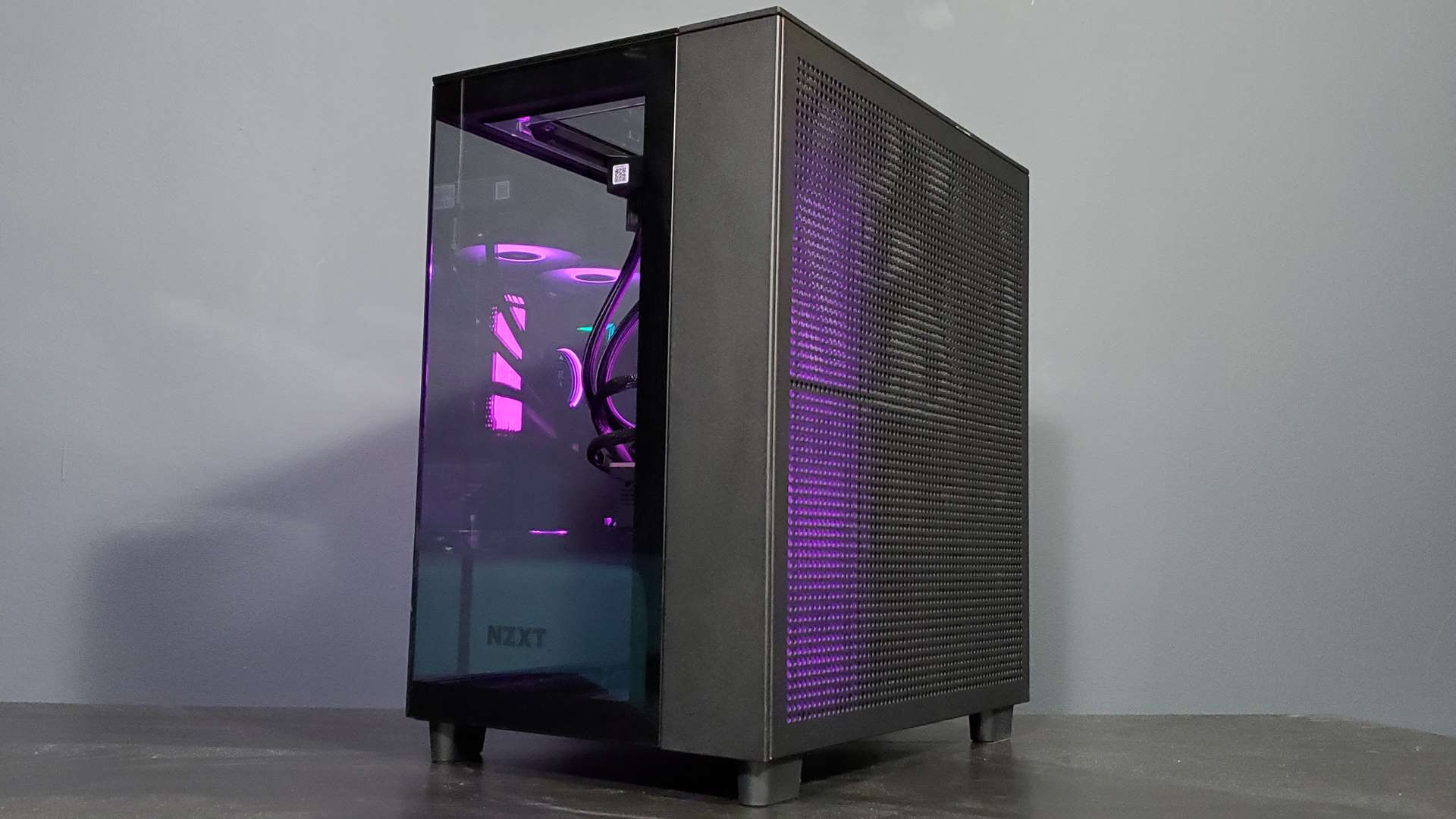
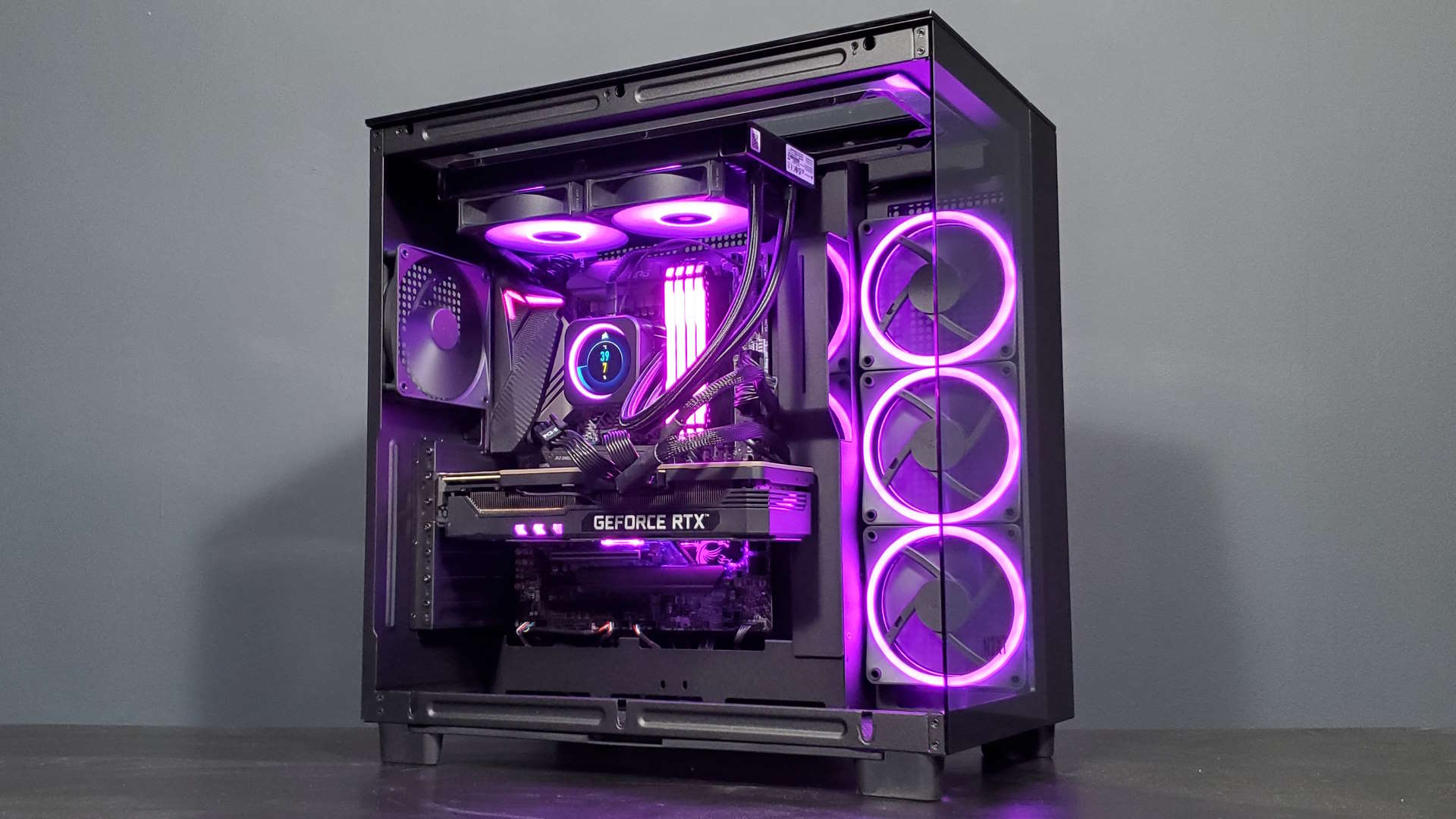
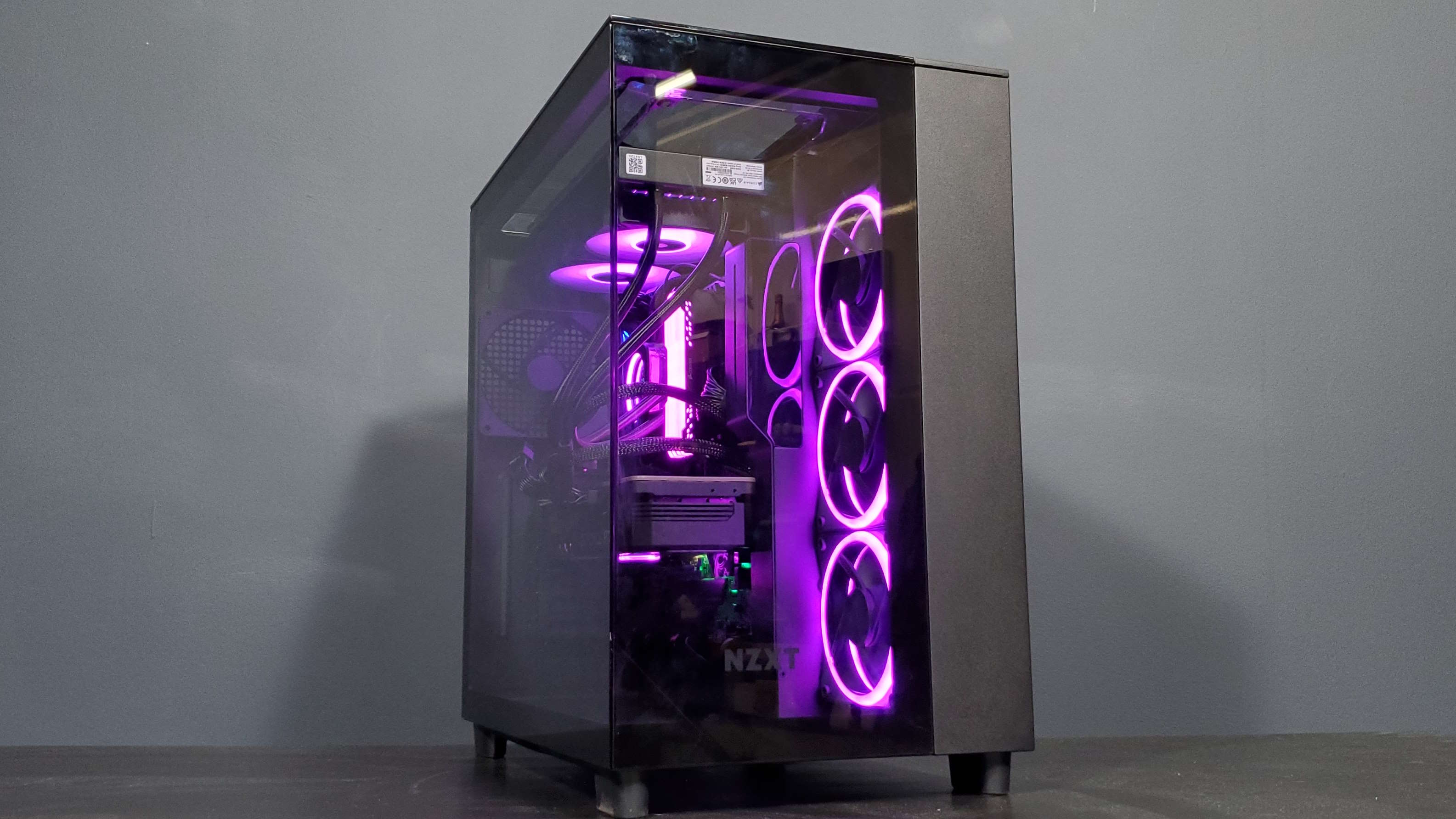
That's my singular design issue with the H9 Elite in itself. The case has resulted in a really clean-looking build, and the bundled RGB fans look pretty great when all the LEDs in the chassis are working together. Which leads to my only other issue, but that's less about the case and more about the RGB fan controller NZXT has bundled with it, and maybe about the state of proprietary plugs in the PC world, too.
I'm not 100% sure who is the guilty party here, but sticking in Corsair's gorgeous new H100i LCD XT cooler—the one with the very NZXT-like display on it—meant I ended up with a pair of fan controllers jammed into the case on top of each other. One for the NZXT fans and the other for the Corsair ones. And it's all because the RGB cables from the fans have different plugs on them.
If they both used a standard plug for this there'd be no issue and I could just add Corsair's cooler to my build and control the fans from a single app. But no, I have to either opt specifically for an NZXT cooler to complement the NZXT case or suck it up and use both the CAM and iCUE software at the same time, with two different fan control boxes stuffing up my chassis.
Still, it looks great in resplendent hot pink with everything lit up.
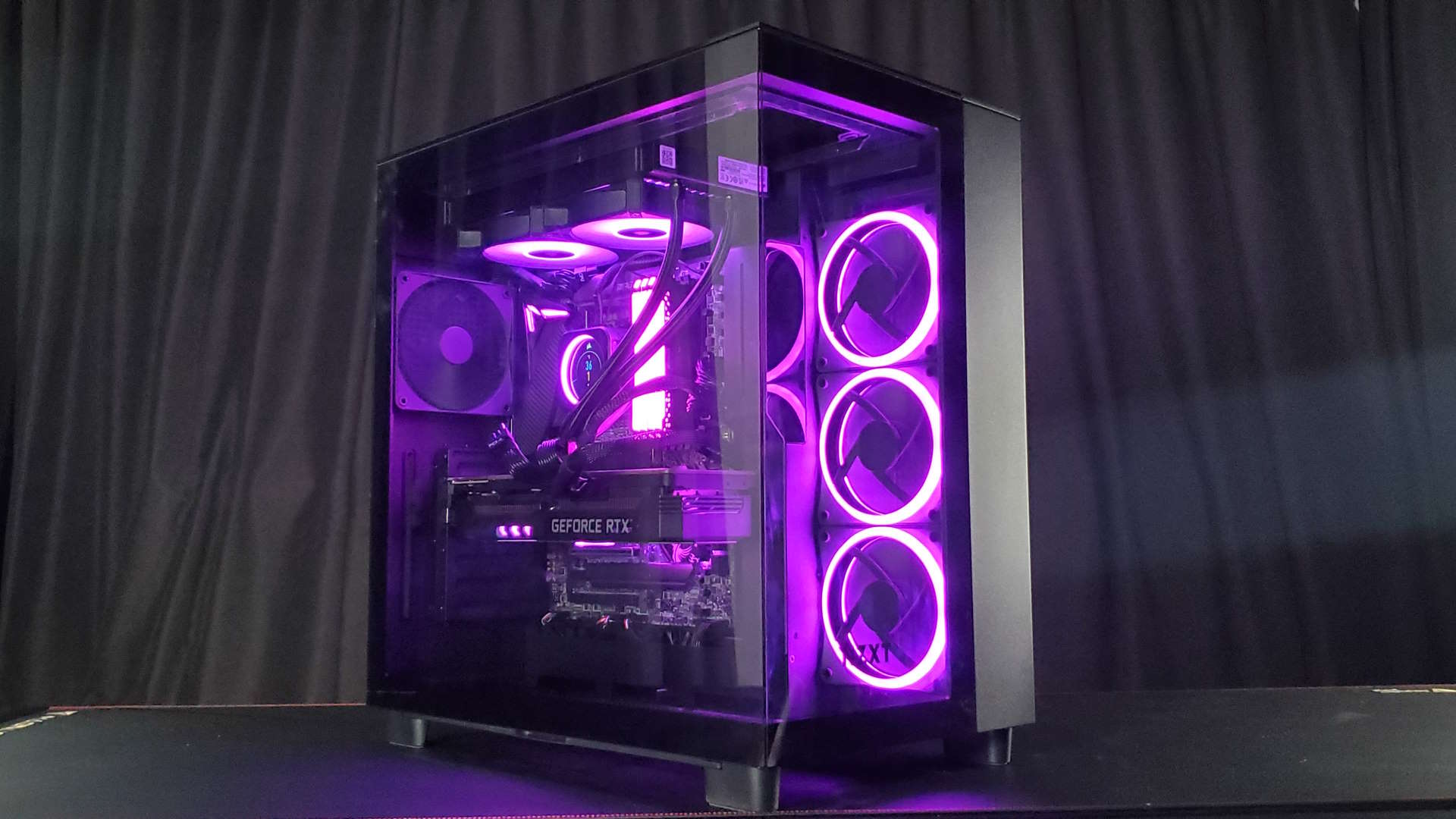
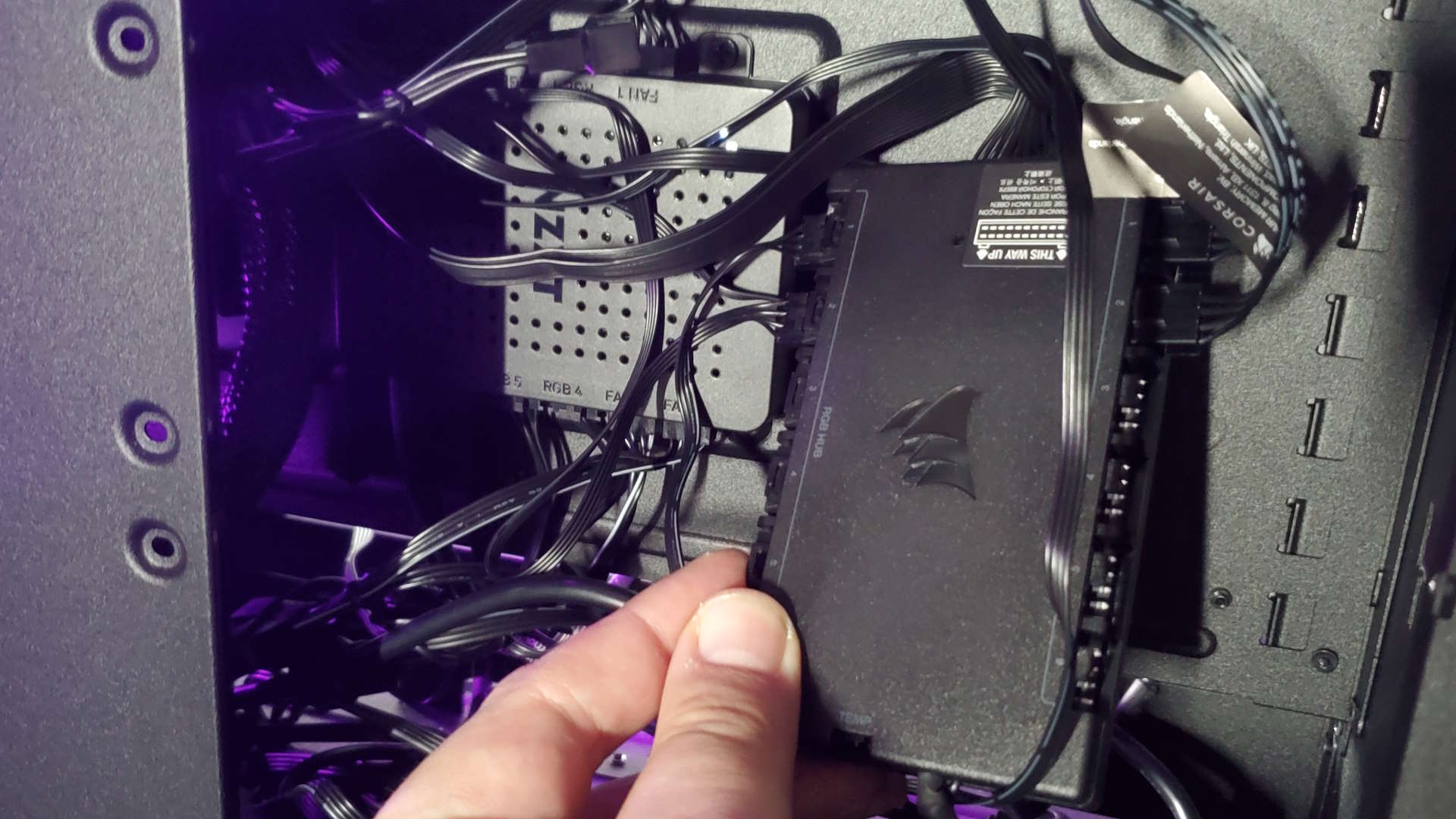
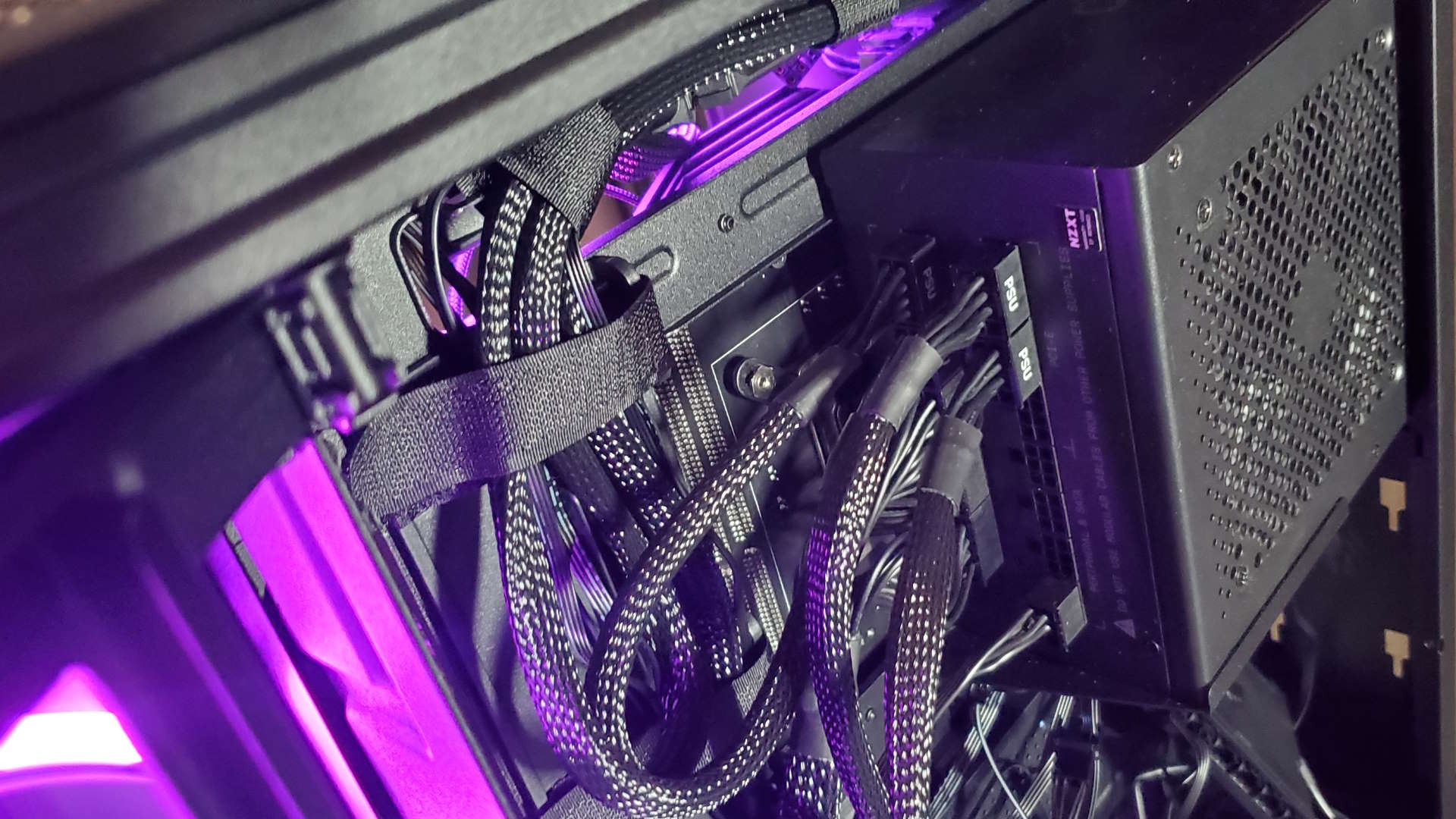
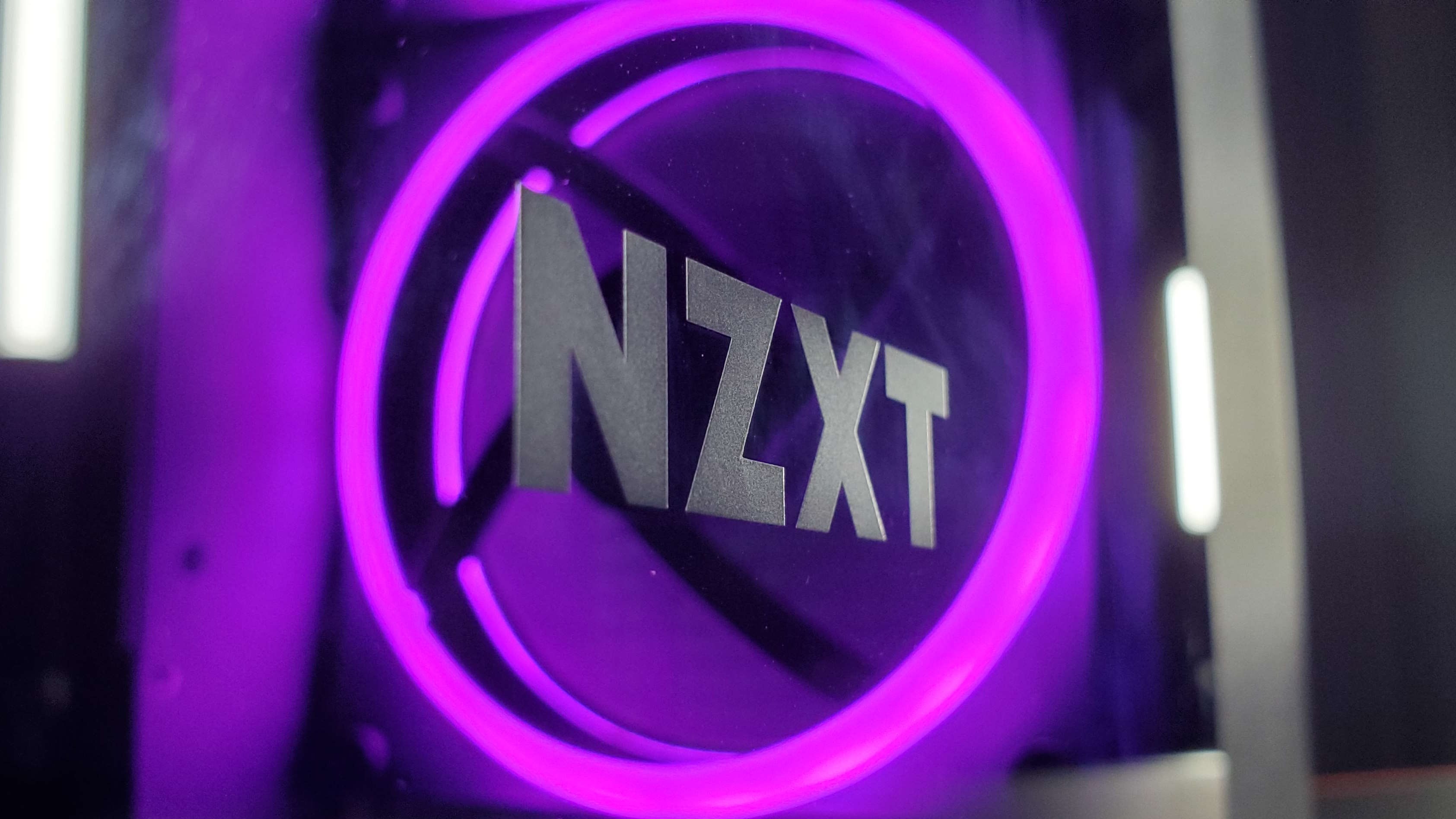
I've been really impressed with the ease with which I've been able to build into the H9 Elite, and with how it finally looks. Though maybe I'd have been just as happy with the H9 Flow; the extra RGB fans and tempered glass top aren't necessarily right at the top of my chassis must-have list. Though the floating radiator up top works for me, even if it's more for show than cooling effect.
Again though we finally have to come back to the fact that aside from those extra luxuries we are looking at a case unashamedly aping the Lian Li O11 Dynamic. Remember that whole imitation being the sincerest form of flattery thing? The full quote is actually less endearing, however: "the sincerest form of flattery that mediocrity can pay to greatness."
The H9 Elite certainly isn't mediocre, and now ends up as an excellent alternative to the classic Lian Li, and one that, in the H9 Flow version, can actually come in cheaper. I'm still unsure whether the extra glass panel, RGB controller, and triple RGB fans are worth the extra $100 or so for the Elite version, but it sure looks great when it's all lit up. Though it is still probably a secondary alternative to the Lian Li classic rather than an outright winner.
It may be imitating the Lian Li O11 Dynamic, but it's a damn good case in its own right, too. With a triple-sided tempered glass design it's really dialling into that showpiece PC aesthetic, and it's a breeze to build into.

Dave has been gaming since the days of Zaxxon and Lady Bug on the Colecovision, and code books for the Commodore Vic 20 (Death Race 2000!). He built his first gaming PC at the tender age of 16, and finally finished bug-fixing the Cyrix-based system around a year later. When he dropped it out of the window. He first started writing for Official PlayStation Magazine and Xbox World many decades ago, then moved onto PC Format full-time, then PC Gamer, TechRadar, and T3 among others. Now he's back, writing about the nightmarish graphics card market, CPUs with more cores than sense, gaming laptops hotter than the sun, and SSDs more capacious than a Cybertruck.
